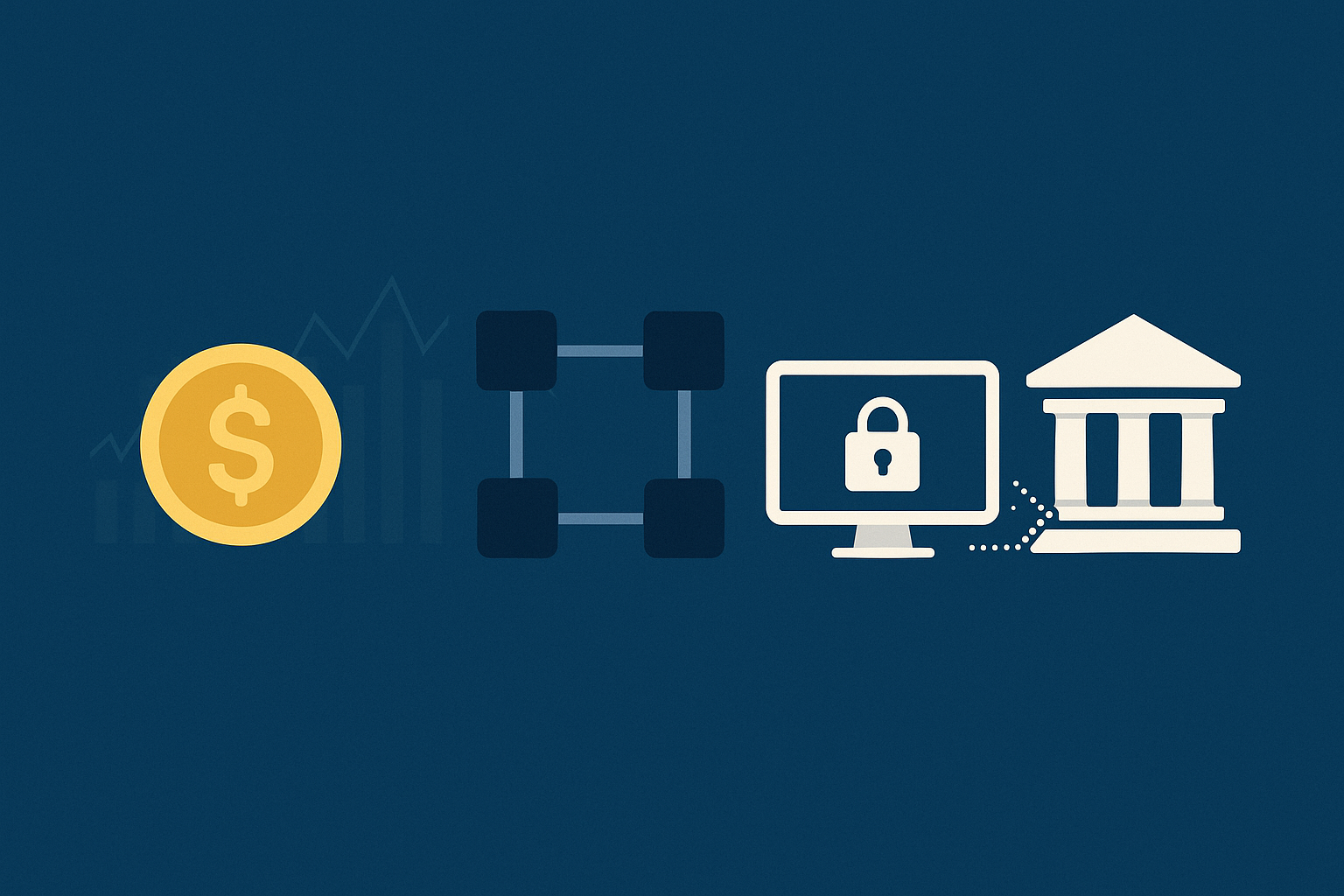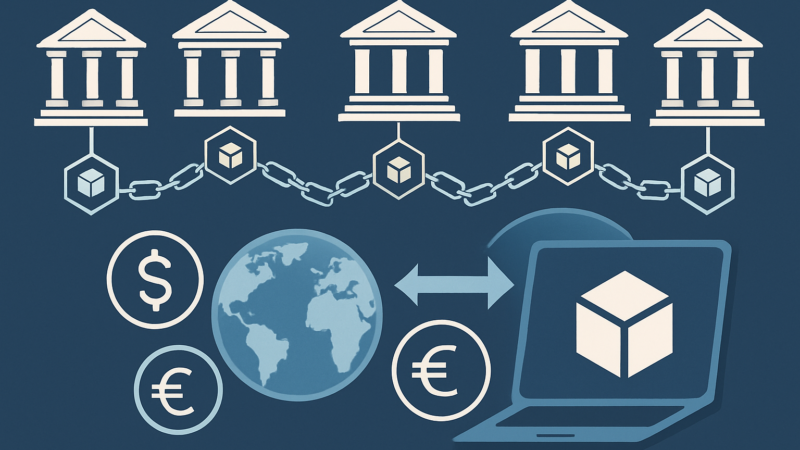EU Pushes Forward With Digital Euro: Safeguarding Monetary Sovereignty In The Age Of Stablecoins
Introduction
The European Union is moving decisively to accelerate its digital euro project following the passage of new stablecoin legislation in the United States. The move reflects growing concern that the global dominance of dollar backed stablecoins could weaken the euro’s international role, shift deposits outside Europe, and undermine the continent’s monetary autonomy. With pressure mounting from both geopolitical and technological forces, the European Central Bank and EU lawmakers are revisiting the design, timeline, and legislative foundations for the digital euro.
Why The US Stablecoin Law Changed The Game?
In recent months, the United States enacted sweeping legislation to regulate dollar pegged stablecoins, giving legal clarity to an already thriving market worth hundreds of billions of dollars. Stablecoins such as USD Coin and Tether are widely used for payments, trading, and cross border transactions. By setting standards for reserves, issuance, and oversight, the US signaled its intention to institutionalize stablecoins and extend the reach of the dollar in digital finance.
For Europe, this move was a wake up call. Policymakers worry that a growing reliance on dollar backed tokens could gradually marginalize the euro in global commerce. If businesses and consumers begin to favor stablecoins tied to the dollar for speed and convenience, the euro could lose relevance not only internationally but also within the eurozone itself. Officials at the European Central Bank have openly voiced concern that deposits could drain from European banks into US based stablecoin ecosystems, threatening both stability and sovereignty.
A Strategic Imperative For The Euro
The euro is not merely a currency. It is a symbol of European unity and economic independence. Ensuring its relevance in the digital age has become a strategic priority. The digital euro is intended to serve as a modern complement to cash, giving citizens and businesses access to a secure, central bank backed digital means of payment. Unlike private stablecoins, which are issued by corporations and depend on trust in their reserves, a digital euro would carry the full backing of the European Central Bank.
This distinction is critical. As the share of cash declines across the eurozone, people are turning more toward digital payments offered by private platforms and foreign players. Without a digital euro, Europe risks ceding control of its payment infrastructure and losing influence over how transactions are conducted. In this sense, the project is not simply about convenience but about defending monetary sovereignty in an era of rapid financial innovation.
Rethinking The Technology: Public Vs Private Blockchains
Initially, the digital euro was envisioned as a centralized system running on a private or permissioned ledger controlled by European institutions. This design mirrored the cautious approach taken by other central banks such as the People’s Bank of China. However, the competitive pressure from the United States has forced a reassessment.
European policymakers are now openly debating whether to leverage public blockchain technologies such as Ethereum or Solana. A public blockchain would allow the digital euro to circulate more widely, be integrated into global decentralized finance ecosystems, and achieve greater transparency. It would also make the euro accessible beyond Europe’s borders, reinforcing its global standing.
Yet this approach comes with tradeoffs. Public blockchains by design make transactions visible, raising privacy concerns. Citizens expect confidentiality in their financial affairs, and policymakers must ensure that the digital euro does not become a tool for surveillance. Balancing openness with privacy has therefore become one of the most pressing design challenges.
Political Urgency And Legislative Timelines
European leaders have acknowledged the need for speed. Christine Lagarde, President of the European Central Bank, has repeatedly urged lawmakers to adopt enabling legislation quickly. Without a clear legal mandate, the ECB cannot proceed to the issuance phase.
The timeline is ambitious. Officials hope to finalize the political framework for the digital euro by early 2026. Following that, technical development, testing, and deployment would take an additional two to three years. If this schedule is maintained, the digital euro could be operational before the end of the decade. This accelerated timeline contrasts sharply with earlier years of slow deliberation, demonstrating the new sense of urgency driven by global competition.
The Role Of MiCA Regulation
The EU already has one regulatory shield in place: the Markets in Crypto Assets Regulation, known as MiCA. This comprehensive framework sets rules for stablecoin issuers, exchanges, and other crypto asset providers operating in the European Union. MiCA ensures that euro denominated stablecoins meet strict requirements and that foreign issuers cannot operate unchecked.
However, regulation alone is not enough. Even with MiCA, euro based stablecoins remain a tiny fraction of the global market, dwarfed by dollar backed tokens. The digital euro would provide a state backed alternative, reinforcing Europe’s ability to compete and giving consumers a trustworthy option directly linked to the central bank. In this way, MiCA and the digital euro together form a two layer defense: regulation to control private actors, and a sovereign digital currency to anchor the system.
Potential Risks And Criticisms
Despite the strong strategic case, the digital euro faces challenges and criticisms. Some economists warn that central bank digital currencies could destabilize the banking sector. If people shift deposits from commercial banks into digital euro wallets during times of crisis, banks could face sudden liquidity shortages. To mitigate this, limits on individual holdings of digital euros are being considered.
Privacy advocates fear the potential for government overreach. If every transaction can be traced, individuals may lose financial privacy. Policymakers have promised to build in safeguards, but trust remains a fragile issue.
There are also concerns about technical complexity. Public blockchains, while transparent and global, face scalability and energy efficiency challenges. Private systems, though easier to control, risk limited adoption. The choice of technology will therefore have lasting consequences for how the digital euro functions in practice.
Phased Implementation Strategy
The digital euro project has been structured in phases. The investigation phase began in 2021, during which the ECB and national banks studied potential models, ran experiments, and consulted with stakeholders. The preparation phase is now underway, focusing on technical prototypes and policy debates.
The next critical step is legislative approval. If EU lawmakers agree on a framework by 2026, the implementation phase could begin, involving technical deployment, infrastructure rollout, and public adoption campaigns. The final step would be integration into daily life, where the digital euro becomes as common as cash or debit cards.
Implications For Global Finance
The race to issue central bank digital currencies is not limited to Europe and the United States. China has already piloted its digital yuan in several cities and continues to expand trials. Other countries from India to Nigeria are exploring similar projects. The outcome of these efforts will shape the future of global finance, determining which currencies dominate digital transactions.
For Europe, the digital euro is a chance to strengthen its currency’s international role. If widely adopted, it could increase the euro’s share in cross border payments and reserves. It could also reduce dependency on foreign payment providers and bolster Europe’s financial independence in an increasingly multipolar world.
Looking Ahead
The path to a digital euro is filled with challenges, from legislative hurdles to technological choices and public acceptance. Yet the urgency of the task has never been clearer. The US has established a legal framework for stablecoins, China is advancing with the digital yuan, and private players continue to innovate at a rapid pace.
Europe cannot afford to lag behind. By accelerating its plans, the EU is signaling that it understands the stakes. The digital euro will not only modernize payments but also protect sovereignty, enhance financial resilience, and secure the euro’s relevance in the digital age.
Conclusion
The acceleration of the digital euro project reflects a pivotal moment in Europe’s financial history. The convergence of geopolitical rivalry, technological disruption, and declining cash use has created a perfect storm that demands decisive action. While risks remain, the digital euro represents an opportunity to reinforce the continent’s sovereignty, safeguard stability, and embrace the future of money.
If Europe succeeds, the digital euro could become more than just a tool of payment. It could be a symbol of resilience, innovation, and unity, anchoring the euro in the digital age and ensuring that Europe continues to play a leading role in shaping the global financial order.



